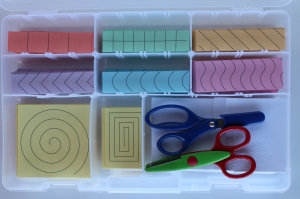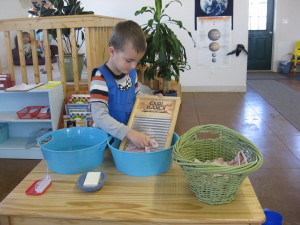Scissor cutting is essential in many kindergarten activities, but many people don’t realize that cutting with scissors is considered to be a pre-handwriting skill.
Why?

Because, correctly done, it provides the child with lots of practice in using the tripod fingers together – ie the thumb, forefinger and middle finger. Have a look at this pic of a mature pencil grip and you can see how these tripod fingers are working well together to control the pencil.
Scissor cutting, with a proper scissor grasp, will give these fingers lots of practice in working together, and will strengthen your child’s hand muscles. This will help to improve fine motor skills and to develop the correct pencil grasp for good handwriting.
How scissor cutting skills develop:
“Cutting out” involves two completely separate skills:
- learning to use scissors… and then…
- learning how to cut out on a line
It is best to teach these skills separately!

Very Important!
Make sure that the scissors are held in the right way – with the thumb through one hole and the middle finger through the other hole, and the index finger resting on the outside of the scissors. If the child’s fingers are very small, it is acceptable to put the index and middle fingers through the same hole.
What about my left-handed child?

Left-handed children should always cut with their left hand, using left-handed scissors.
This is important as it helps them to make their dominant hand strong and specialized. Left handed scissors are vital to enabling them to cut successfully.
So-called “ambidextrous scissors” are a marketing ploy – it is not the comfort of the handles that makes a difference, it is the way the blades are fixed. Look at the picture above: the scissors on the left are for left-handers, and you can see how the blades differ from those on the right-handed scissors.



